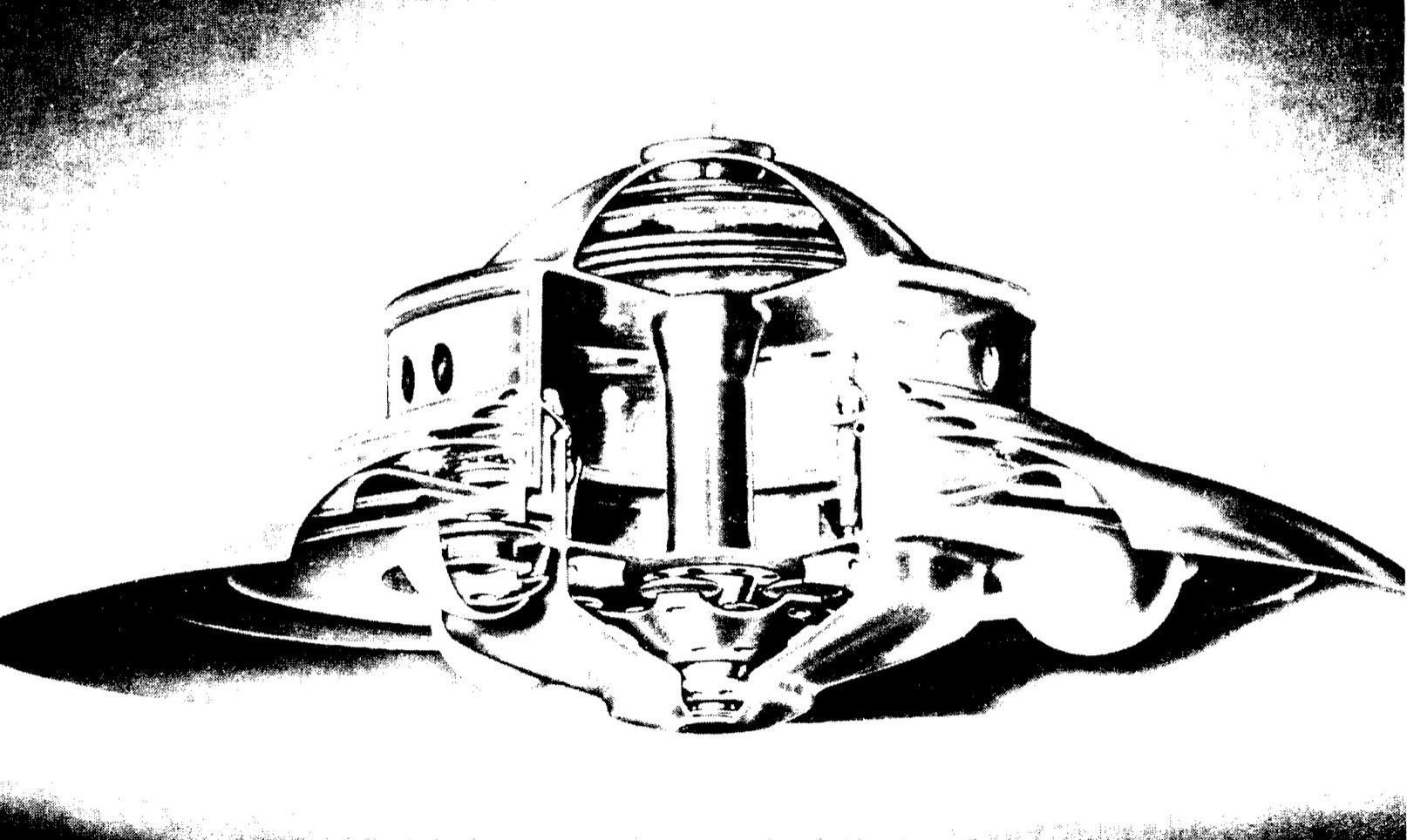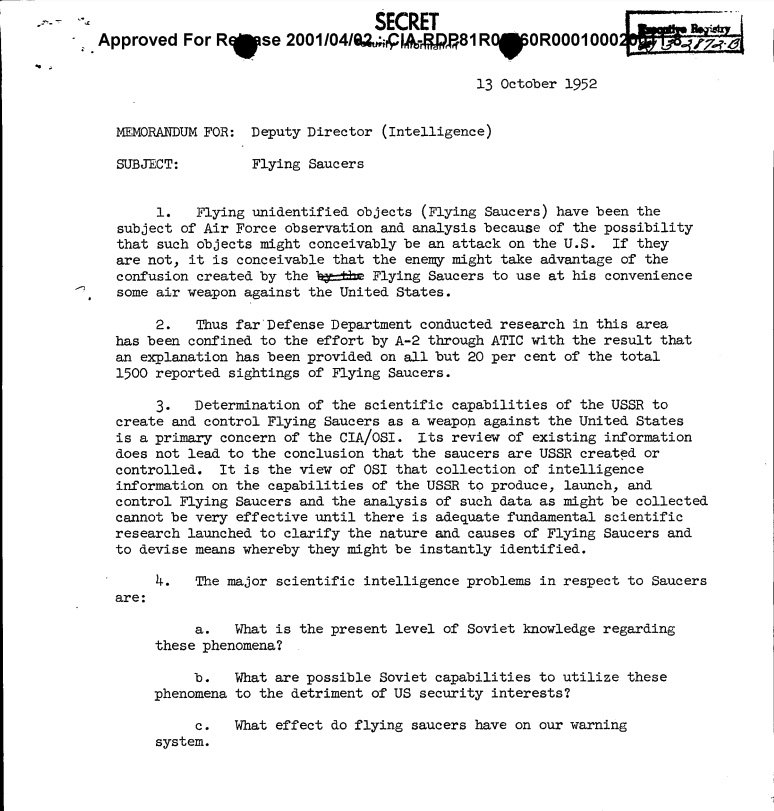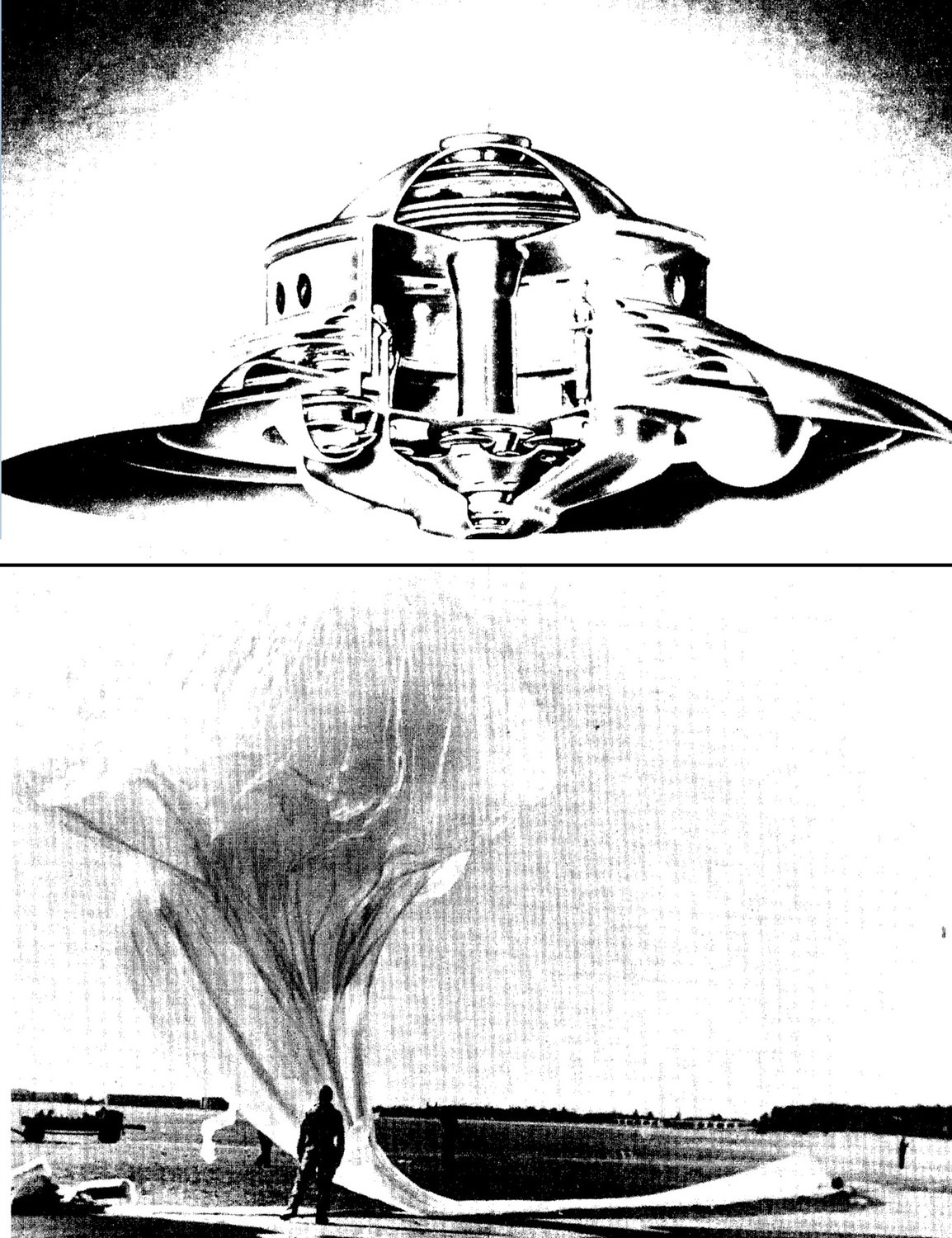The CIA Went Looking for UFOs — but Decided It Would Rather Spy on Americans

The CIA went looking for UFOs in the early 1950s. They decided they’d rather spy on Americans. Image from CIA archives.
On Dec. 10, 1946, a World War II-era C-46 transport carrying 32 Marines lost its way in heavy weather near Mount Rainier in Washington and crashed, killing all aboard.
Though weather was the clear cause of the crash, the incident indirectly launched a half-century of UFO conspiracies, panics, and ham-handed government investigations, many of which are still echoed in the military reports about UFOs circulating this month. But the early UFO craze also caught the eye of the CIA, which launched its own investigations. Far from finding aliens, declassified documents tell the tale of how a Soviet-obsessed CIA eventually recommended the legally questionable step of monitoring America’s own civilian UFO watchers.

The C-46 crash was a major tragedy for the Marines, and a reward was offered to find the wreckage. The following June, Idaho businessman Kenneth Arnold was flying himself in a three-seat Call-Air Model A. With time on his hands before an appointment on the ground, he lingered an extra hour over Rainier to see if he might spot the lost plane.
Instead, he later claimed, he saw nine “tailless objects streaking south” across the landscape.
Within days he told his story to a wire service reporter, guessing the speed of the craft at over 1,000 mph.
Arnold — who later wrote a book called The Coming of the Saucers — was soon on front pages across America as over 150 newspapers picked up the story. Almost immediately, other UFO reports followed, and America’s UFO craze was on.
As the mania grew, one place listening to the rumors was the Central Intelligence Agency.

Declassified CIA reports of the time reference the Arnold incident frequently, including one from 1952 that says “The Saucer furore in this country started in June 1947 when Kenneth Arnold, a reputable business man flying his own plane reported nine discs flying in formation past Mount Rainier at an estimated speed of 1000 miles per hour.”
Other declassified CIA documents of the time described UFO sightings between 1947 and 1952 as “national security threats.” In a declassified memo, Assistant Director of the Office of Scientific Intelligence H. Marshall Chadwell wrote to the CIA’s director, declaring: “‘Flying saucers’ pose two elements of danger which have national security implications. The first involves mass psychological considerations and the second concerns the vulnerability of the United States to air attack.”
To move beyond the agency’s own analysts’ opinions, Chadwell put together a team of scientists known as the Robertson Panel in 1953, chaired by CalTech physicist H.P. Robertson. The panel included civilian experts in nuclear physics, radar, and electronics.
After meeting for four days, the Robertson Panel unanimously concluded that flying saucers offered no threat to national security. The committee’s report, declassified in 2001, said UFOs posed a distinct “lack of danger,” and were “not beyond the domain of present knowledge of physical science.” In a conclusion that said more about the McCarthy-era politics of the time than it did extraterrestrial life, the report recommended that the CIA should refocus its efforts on “Unofficial Investigating Groups,” specifically naming the “Civilian Flying Saucer Investigators” in Los Angeles and the “Aerial Phenomena Research Organization” in Wisconsin, both little more than civilian clubs swapping stories and do-it-yourself “research.” The Robertson committee, however, believed that such organizations should be watched because of their “potentially great influence on mass thinking if widespread sightings should occur.”

After the Robertson Panel report, the CIA no longer had the desire or funding to chase UFOs, and turned the subject over to the Air Force’s purview. Between 1952 and 1969, the Air Force ran programs like Project Saucer, Project Grudge, and Project Sign, eventually ending in the more famous Project Blue Book. Operational for almost two decades, Project Blue Book was responsible for creating a UFO reporting system for the military and included various research projects over the years but never did find any ETs.
After another flare-up of supposed sightings by military jets in the last decade, yet another military report, this one from Defense’s Unidentified Aerial Phenomena Task Force, is due soon.
Read Next:

Lauren Coontz is a former staff writer for Coffee or Die Magazine. Beaches are preferred, but Lauren calls the Rocky Mountains of Utah home. You can usually find her in an art museum, at an archaeology site, or checking out local nightlife like drag shows and cocktail bars (gin is key). A student of history, Lauren is an Army veteran who worked all over the world and loves to travel to see the old stuff the history books only give a sentence to. She likes medium roast coffee and sometimes, like a sinner, adds sweet cream to it.
BRCC and Bad Moon Print Press team up for an exclusive, limited-edition T-shirt design!
BRCC partners with Team Room Design for an exclusive T-shirt release!
Thirty Seconds Out has partnered with BRCC for an exclusive shirt design invoking the God of Winter.
Lucas O'Hara of Grizzly Forge has teamed up with BRCC for a badass, exclusive Shirt Club T-shirt design featuring his most popular knife and tiomahawk.
Coffee or Die sits down with one of the graphic designers behind Black Rifle Coffee's signature look and vibe.
Biden will award the Medal of Honor to a Vietnam War Army helicopter pilot who risked his life to save a reconnaissance team from almost certain death.
Ever wonder how much Jack Mandaville would f*ck sh*t up if he went back in time? The American Revolution didn't even see him coming.
A nearly 200-year-old West Point time capsule that at first appeared to yield little more than dust contains hidden treasure, the US Military Academy said.












